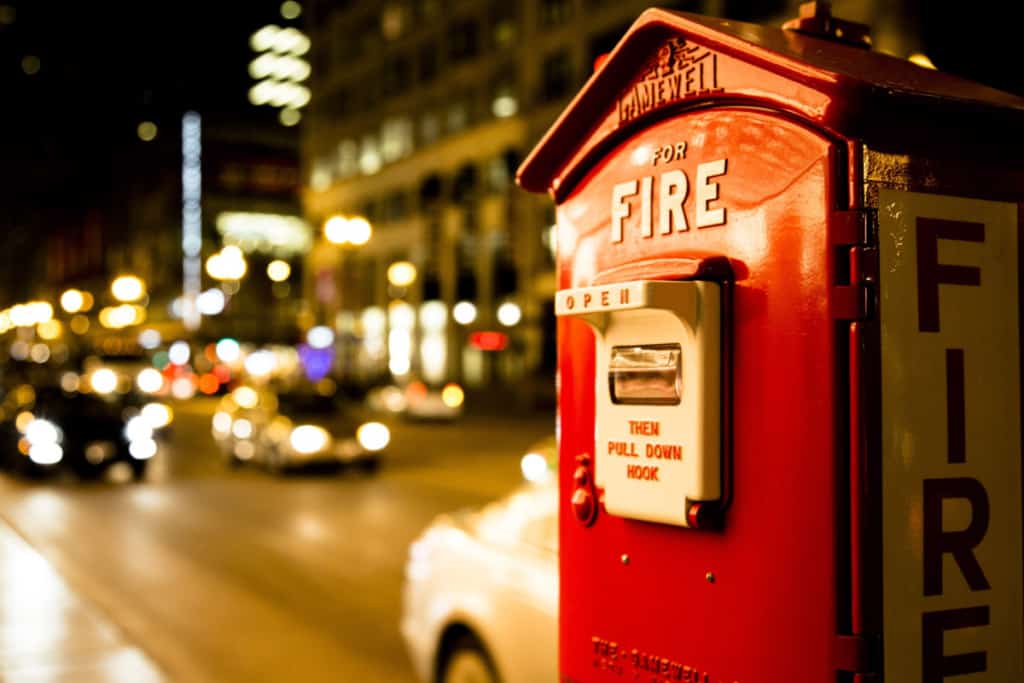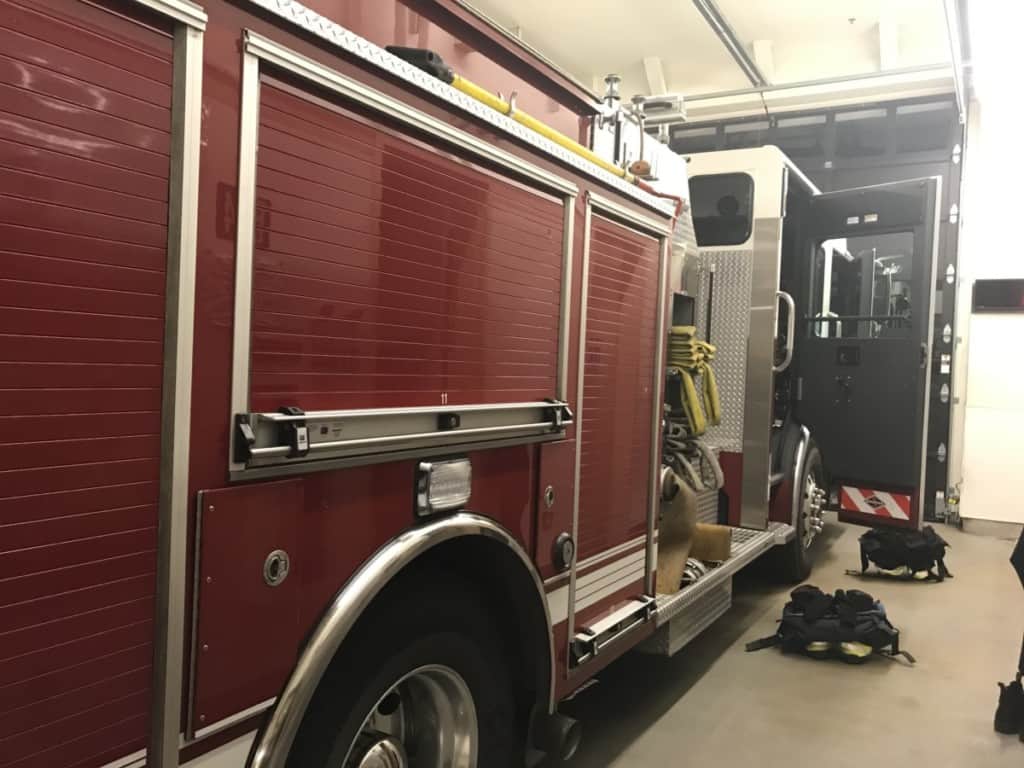When you think about a firefighting TV show or movie, firefighters are portrayed as heroes running into a burning building, putting out the fire, and getting residents to safety. However, firefighting goes beyond what the movies show us. There is a lot of behind-the-scenes work that takes place, and firefighters can’t help anyone unless they know where and when there is an emergency.
Firefighters know when there is a fire because dispatchers notify them when someone reports a fire by calling 911 (or another emergency number outside the U.S.). The closest stations are notified and they send the necessary fire engines and trucks to the call.
According to the National Fire Protection Association, a fire department in the United States gets information about a fire somewhere in the country every 24 seconds. These fires can be from bush fires and automobile explosions to home fires, workplace and factory fires.
Let’s take a closer look at how firefighters are notified when there is a fire or any other emergency call.
Your # 1 priority is keeping your family safe. As a firefighter, I recommend everyone has updated smoke detectors that don’t require battery changes, like these ones from Kidde, a fire extinguisher, like this one from Amerex, and a fire escape ladder if you have bedrooms above the first floor, I recommend this one from Hausse.
Also read: 14 Things Firefighters Do All Day When Not Fighting Fires
Emergency Service Dispatch
Fire departments are well-practiced in receiving information about fires and dispatching the right resources to the location. The structural damage and loss of life a fire causes depend on the speed and efficiency of communications within the fire department. This is also true with other types of emergencies, such medical calls like heart attacks or strokes.
In most countries, the easiest way to reach the authorities and inform them about an emergency is through the country’s emergency number.
In the United States, the number to call for emergencies is 9-1-1.
For reference, here are the numbers you need to call in various countries to reach an operator who can send firefighters to your location:
- The emergency number in Canada and Mexico is also 9-1-1.
- The emergency number in all 28 European countries is 1-1-2.
- The emergency number in China is 1-1-9.
- The emergency number in Australia is 0-0-0.
You can view a full list of emergency telephone numbers here. Some countries may use different emergency numbers for police, firefighters or ambulances.
Note: Some phone carriers support the emergency numbers of other countries. For example, if you dial 112 while in the United States, you’ll only be redirected to the nearest emergency dispatch location if you’re dialing on a GSM carrier like AT&T or T-Mobile.
Once an operator picks your call, you’ll be asked what the emergency is and what you need help with. These operators are the ones who determine whether you will be connected to the police, medical (ambulance), fire department, or maybe a combination of these.
Fire departments are always ready to answer emergency calls at any time of the day or night.
As soon as you are transferred to the dispatcher for the fire department, you’ll be asked a set of questions, including your address, call-back phone number, type of building, number of persons in the building, what is on fire, and other relevant information. If the emergency is not related to fire, you will be asked different questions, but the fire department may still respond.
Getting information from you is what these dispatchers are trained to do. They use special tools to help determine what information is needed and what questions to ask, based on the type of call.
After the dispatcher has the necessary information about the call, it will notify the firefighters (or whatever other resources may be needed) through their radios and by an audible and visual alert. This alert will sound an alarm at the station, as well as turn on the lights to notify the on-duty firefighters.
Today, many departments use automated dispatch technology that helps them to efficiently and effectively reduce response time and improve the process of alerting firefighters of a call.
There are also fire alarms in many commercial and residential buildings that can sense smoke or heat and set off an alarm. These alarms can notify someone to call 9-1-1 or some fire alarms will send a direct signal to a monitoring facility off-site, who can notify the local dispatch of the emergency.
Aside from putting out fires, firefighters also respond to calls involving emergency medicine (EMS), car accidents, hazardous materials (HazMat), flooding, specialty rescue, bomb threats or active shooter events, water accidents, and natural disasters such as earthquakes, tsunamis, and tornadoes.
How Fire Departments Used to Learn About Fires

While the internet and phone systems of the modern era help today’s firefighters learn about nearby fires almost instantaneously, this technology wasn’t always around to help. Before there were phone lines and satellites, people had to devise other methods of notifying firefighters of fires.
To understand these methods, we have to go back to the first instances of organized firefighting, which occurred in Rome.
The first Roman fire brigades – which were private teams of people owned and operated by wealthy landowners – would patrol the streets of Rome and watch for fires.
If they identified a fire, they would offer to buy the structure from the current owner. If the owner agreed to sell the residence at a greatly reduced rate, the team would put out the fire (and make a nice profit for their boss).
Early Europe’s firefighting endeavors were nearly identical to this. While there were no private fire teams, the monarchs who ruled in Europe’s major cities typically used the King’s watch as fire sentries. This method often proved ineffective, as many of the cities in Europe were far too large for the watch to cover them effectively.
The first instances of firefighters in the United States had a similar method of notifying people of fires. The governors or mayors of cities would appoint watchmen and equip them with wooden rattles.
If the watchmen saw a fire, they would swing their rattles around and summon the surrounding citizens. The citizens would then form a bucket brigade and pour water on the fire until it was out.
This method of using watchmen to notify citizens or fire teams of nearby fires persisted until modern communication technology like the telegram or the telephone came along.
It also took a while for many cities to develop dedicated fire teams to respond to fires, so even the advent of technology like the telegram didn’t necessarily improve fire response times, as many towns didn’t have a central fire department to notify about the fire!
Also read: What To Do If The Fire Alarm Goes Off In Your Apartment?
Firefighter Emergency Response
Firefighters are well-trained on how to respond to a fire or any other emergencies. They understand the behavior of fire in a building and know what to expect.
When they receive a notification about a fire, firefighters quickly put on the correct protective equipment and get onto the fire truck or engine to which they are assigned, to respond to the fire scene as fast as possible. Dispatch will send the necessary number of fire crews, based on the type of fire.
Fire trucks and engines are highly customized to deal with the many situations a fire crew might face. These duties can include carrying or pumping water, fire suppression, emergency medical, vehicle extrication, and various types of rescues.
Upon arrival at the scene of the fire, firefighters quickly evaluate the situation and receive instructions from a commanding officer. They work as a team and each individual is assigned a specific task.
Some crew members help in setting up and guiding ladders, while others are responsible for connecting hoses to fire hydrants. Another team is tasked with using ladders and forcible entry tools to get into buildings and rescue victims and put out the fire.
After the fire has been suppressed, they remain at the scene to ensure that the fire is completely put out and prevent it from rekindling (restarting), as well as to clean up the scene. They also check for debris and smoldering fire and look for signs of building collapse.
As soon as this process is over, they return to the fire station to clean their equipment, refuel the fire trucks, refresh and replace supplies, and prepare for the next call.
Conclusion
Firefighters play a key role in keeping the community safe. They work long shifts and spend a lot of time preparing and learning about fires. Because today’s firefighters are expected to be able to respond to a wide variety of calls; they must always be working to maintain infrequently used skills, as well as learning new methods and techniques. Training is a big part of being a firefighter.
For firefighters to receive timely notice about a nearby fire, they need to be notified by an emergency dispatcher. This dispatcher learns about the fire from someone calling in or an automated fire alarm. The person calling in the fire report does so by dialing 9-1-1 (or the correct countries emergency number).
Once a fire team receives an alert or notification about an emergency, they respond promptly, as professionals and work as a team to put out the fire or mitigate any other emergency.
Related Articles
Is It Safe To Sleep In A House After A Small Fire?
A Guide To Fire Drills: The Do’s and Don’ts

